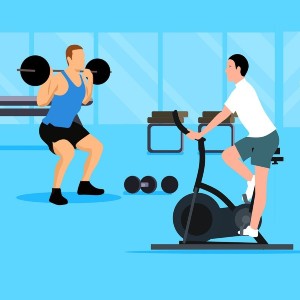 Smart Citations
Smart CitationsSee how this article has been cited at scite.ai
scite shows how a scientific paper has been cited by providing the context of the citation, a classification describing whether it supports, mentions, or contrasts the cited claim, and a label indicating in which section the citation was made.
Effect of physical activity on long COVID fatigue: an unsolved enigma
Covid-19 disease is well documented and often the most common symptoms include myalgia and muscle fatigue. Approximately 10% of those infected complain of persistent fatigue even many months after the end of the acute phase of the disease. This gives rise to a condition different from the previous one and commonly known as 'post-acute COVID-19 syndrome' or simply Long-COVID. Although the origin of muscle fatigue is multifactorial, the state of prolonged fatigue observed in the Long-COVID syndrome suggests the existence of a possible state of atrophy or rather acute sarcopenia. Under these conditions, the use of physical activity programs can effectively counteract the state of atrophy underlying the fatigue phenomena observed. If this is also the situation during the Long-COVID, the muscular symptom should be positively influenced by the administration of programmed physical activity cycles. In fact, in patients with Long-COVID, the few published papers seem to indicate that patients who are physically active and who make an effort to engage in physical activity even during the illness have decreased duration and intensity of the illness. However, analysis of the studies in the literature also suggests that a small percentage of people with Long-COVID do not appear to benefit from the application of physical activity programs, so further studies on homogeneous samples are needed to provide a firm answer to the question: can planned physical activity help patients during the pathological course of Long-COVID?
How to Cite

This work is licensed under a Creative Commons Attribution-NonCommercial 4.0 International License.
PAGEPress has chosen to apply the Creative Commons Attribution NonCommercial 4.0 International License (CC BY-NC 4.0) to all manuscripts to be published.

 https://doi.org/10.4081/ejtm.2023.11639
https://doi.org/10.4081/ejtm.2023.11639





